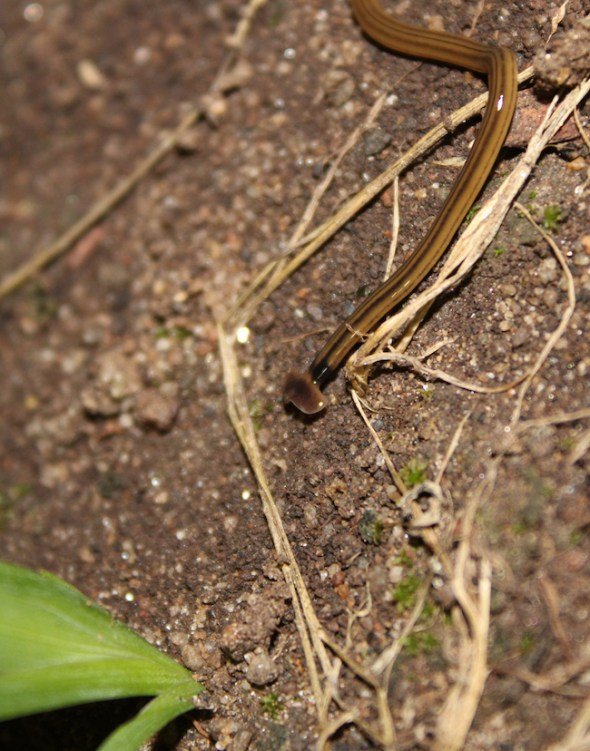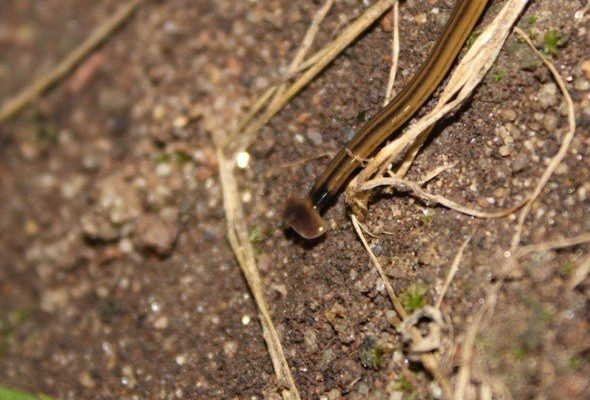
So, why do we need to handle them with care? Hammerhead worms, especially the species known as *Bipalium kewense*, can be a bit tricky. They get their name from their distinctive head shape, but they also have a unique secret: they’re toxic to their prey, which includes earthworms. You might be wondering, “Why should I care?” Well, their presence can impact local ecosystems. Let’s make sure we know how to deal with them properly—because who wants to inadvertently harm nature while trying to explore it?
Understanding Hammerhead Worms
Hammerhead worms are part of the flatworm family, and they’re primarily nocturnal predators. These little guys can grow to be quite long—up to 12 inches! Their bodies are usually brown or gray, making them blend in with the soil, which can make spotting them tricky. Here’s the kicker: they reproduce by fragmentation, meaning a single worm can turn into multiple worms if cut in half. Kind of creepy, right?
You might find these worms in tropical and subtropical regions mainly, but they’ve also made their way to warmer areas in the United States. If you live in places like Florida or Texas, you might even see them turning up in your garden. While they might seem harmless, these worms can be particular nuisances. They can introduce toxins into your garden, which can harm beneficial soil creatures. So, knowing how to handle them safely is crucial.
Why Gloves Matter
Now that you know a bit about hammerhead worms, let’s talk about gloves. You might be tempted to handle these worms barehanded, but think again! Wearing gloves is essential for a few reasons. First and foremost, some hammerhead worms can secrete toxins. While these toxins won’t harm you significantly, they can irritate your skin. This means you could end up with a rash or an unpleasant reaction.
Additionally, gloves provide a barrier against any bacteria or pathogens that might be present on the worm’s body. It’s like giving yourself an extra layer of protection. You might be wondering what type of gloves to use. Look for thick garden gloves or even rubber gloves. Just make sure they are sturdy enough to resist any potential punctures or tears.
Choosing the Right Tools
Besides gloves, there are a few tools you should consider when dealing with hammerhead worms. Here are some helpful ones:
- Trowel: A small garden trowel can make it easier to scoop up worms from the soil.
- Containers: Having a container handy prevents any surprises if you accidentally drop the worm.
- Long Tweezers: If you’re feeling squeamish, tweezers can allow you to pick up the worm without getting too close.
- Shovel: If you need to move a lot of soil and worms, a shovel can help with larger areas.
Using the right tools can make handling these worms a lot easier and less messy. It also shows respect for the creatures and helps you maintain a safe distance.
Safe Handling Techniques
So, how do you handle hammerhead worms safely? Here’s a step-by-step guide to make the process easier:
1. **Wear Your Gloves:** Before you even think about touching a hammerhead worm, make sure your gloves are on. This is a non-negotiable step.
2. **Use Your Tools:** Grab your trowel or long tweezers. If you’re using a trowel, gently dig around the worm while being careful not to harm it.
3. **Gently Scoop or Grab:** If you’re using tweezers, you can carefully grasp the worm in the middle of its body. If using a trowel, scoop it up and place it in your container.
4. **Do Not Crush:** Be cautious not to squeeze too hard; hammerhead worms are delicate, and crushing them can release toxins.
5. **Relocation:** If you’re trying to relocate the worm, find an appropriate spot away from your garden or other areas you want to protect.
This may take a little practice, but with time, you’ll feel more comfortable handling these unique creatures.
Disposing of Hammerhead Worms
Once you’ve handled a hammerhead worm, you might find yourself asking, “What do I do with it now?” If you don’t want to keep it as a temporary guest in your garden, there’s a right way to dispose of it without causing harm:
– **Do Not Compost:** Hammerhead worms shouldn’t be added to your compost pile. They can survive and might end up in your garden later.
– **Relocate with Care:** If you’re moving the worm, take it to a wooded area or a place where it won’t disrupt the local ecosystem. Just avoid dumping it in another garden.
– **Seal It:** If you’ve collected several worms, you can seal them in a container and dispose of them in a safe and humane way, like through municipal waste.
By taking these steps, you’ll ensure that you’re handling hammerhead worms responsibly.
Environmental Considerations
As you learn how to handle hammerhead worms, it’s also important to reflect on the larger picture. These worms can play a role in local ecosystems, albeit sometimes a detrimental one. They can disrupt the balance of soil life and impact native species. If you garden sustainably, you’ll want to keep an eye on their presence.
Think of your garden as a little ecosystem of its own. Just like you wouldn’t toss a foreign plant in without considering how it affects the others, you wouldn’t want to release a hammerhead worm either. Keeping your garden free from invasive species is essential for its health and vitality.
In essence, dealing with hammerhead worms doesn’t have to be intimidating. With the right gloves and tools, plus a little knowledge, you can handle these fascinating creatures safely. Remember, while they may seem harmless, their effects on the garden can be significant. By being mindful of how you interact with them, you’re showing respect for nature and making sure your garden thrives.
So next time you encounter a hammerhead worm, you’ll be equipped and ready to handle it with care. Happy gardening!

